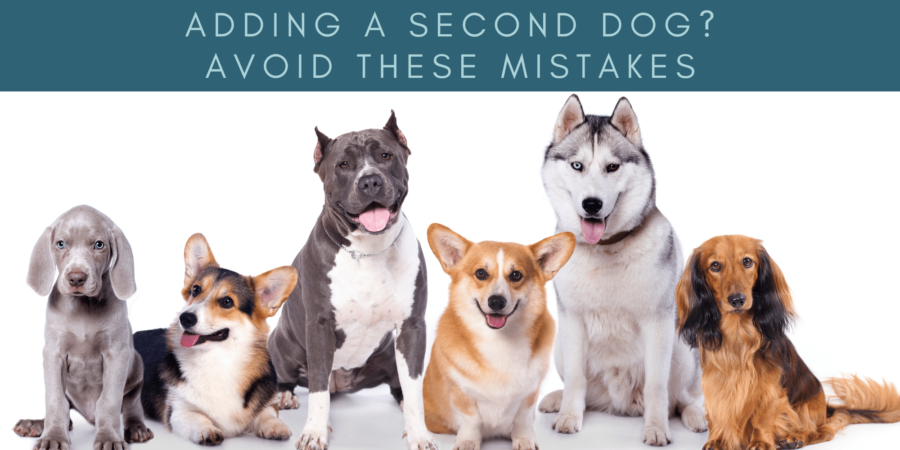If you think that only first-time dogs owners make all the mistakes, rest assured that is not the case. I saw this post recently on one of my social media feeds. In short, the owner of two Bernese Mountain Dogs, aged three years and one year, wants to rehome younger of the two. Why? Because the older dog, who is recovering from double elbow surgery, and going to physical therapy can’t handle the puppy exuberance the of one-year-old.


But, wait! There’s more!
After the initial rehoming post, the owner has now paused the request, because her husband wants to try training the puppy first. WHAT!!!!

So What’s Wrong with This Picture
Point #1: Elbow dysplasia does not happen overnight, just like hip dysplasia. Without going off on a tangent on dyplasia, my German Shepherd, Olympia, was diagnosed with hip dysplasia at age 1-1/2 years, and was able to live with it for another 10-1/2 years. Olympia, was four years old when I noticed her one day limping and in obvious pain. An immediate visit to my vet and the dreaded diagnosis — she needed orthoscopic surgery for a bone chip that broke off in her right front elbow due to — elbow dysplasia.
Point #2: The owner brings a second Bernese Mountain Dog puppy into their home, and the dog is now one-year old, which for large and giant breeds, is still an age that is “puppy.” By extrapolation, that means the older dog was two years old at the time of the puppy adoption, and that it’s possible the owners already knew of their dog’s elbow dysplasia.
Because surgery is so expensive, (Olympia’s was $4500 in 2012), and the recovery period requires extensive therapy and rest, it’s something that owners think about before they embark on major surgery. Was the dysplasia and subsequent treatment known to the owners at the time they adopted the puppy?
Point #3: From the text of the post, it appears that the older dog had the surgery a short while ago, is now recovering with weekly visits to physical therapy. The older dog, due to the surgery/rehab, now has trouble coping with the younger puppy. When dogs are in pain, or getting used to a new routine, their personalities can change from enjoyment or toleration to “leave me alone” or “get lost.”

Point #4: Most important. The owner, by their own admission, didn’t train the puppy. The puppy is one year old, and it’s not been trained???? Certainly, a dog should be potty trained and know the basic commands, but was this puppy not told/shown how to interact with/respect another dog? Apparently, the owners had another dog that went through training, so they’re going to spend $3000 trying to train their Bernese puppy as a last resort.
Avoiding/Correcting the Mistakes
DO YOUR HOMEWORK and CHECK OUT THE BREEDER
When you decide that you want a purebred dog, do your homework and find a reputable breeder. There are numerous ways this can be done, which I can expound on for another blog post. Reputable breeders will know of the diseases and afflictions most commonly associated with their breed. And reputable breeders do testing, and do their research before they breed their dogs. I have two German Shepherds right now, age 3 yrs and 7 yrs, who have no dysplasia of any kind.
KNOW YOUR DOG’S TEMPERAMENT
If you already have a dog, you’ve lived with it for many months or years. Just like with humans, dogs have personalities, likes and dislikes, and instincts. Some dogs are best as only dogs, while others enjoy the company of other dogs or animals, and love to have a bud to snuggle and play with. Before you bring another dog, puppy or adult, into your home, carefully assess and think about whether your dog can handle a second playmate.
I brought into my home two 9-week old puppies, one in April, one in September, when I already had two 10-yr old German Shepherds, and a 6-yr old Lab. Why did the adoptions work? Because I knew my dog’s temperaments, and because of how they were trained. My dogs know what behaviors I will tolerate and which I won’t.
TRAINING, TRAINING, TRAINING
Ninety-six percent (96%) of dogs surrendered to shelters received no obedience training at all.1 I’ve always been a firm believer in that the kind training a dog should receive, and the person training it, depends upon the breed of dog you own and what will be its surroundings. It’s one thing when you decide to adopt a Beagle or a Yorkshire Terrier; it’s quite another when you decide to adopt a Pitbull or a Doberman.
Every dog, no matter its size, should know the basic commands of sit, stay, come, off, down, leave it. And, just as I mentioned above about knowing your dog’s temperaments, it’s also up to you as the “leader of the pack” to ensure that your dogs are not only respectful to you, but to one another. Dogs instinctively show each other what behaviors they’ll put up with. I see that all the time with my Shepherds and Bostons.
Bottom Line
When you decide to bring a second dog into your home, pay close attention to your first, or other dogs. It’s not about whether you want a second Golden Retriever or Great Dane, it’s about deciding whether A) your first dog will be receptive to a second; and B) whether the temperament of your first dog is a fit with the temperament of the new dog.
Discover more from The Pup Mommy
Subscribe to get the latest posts sent to your email.






Leave a Reply